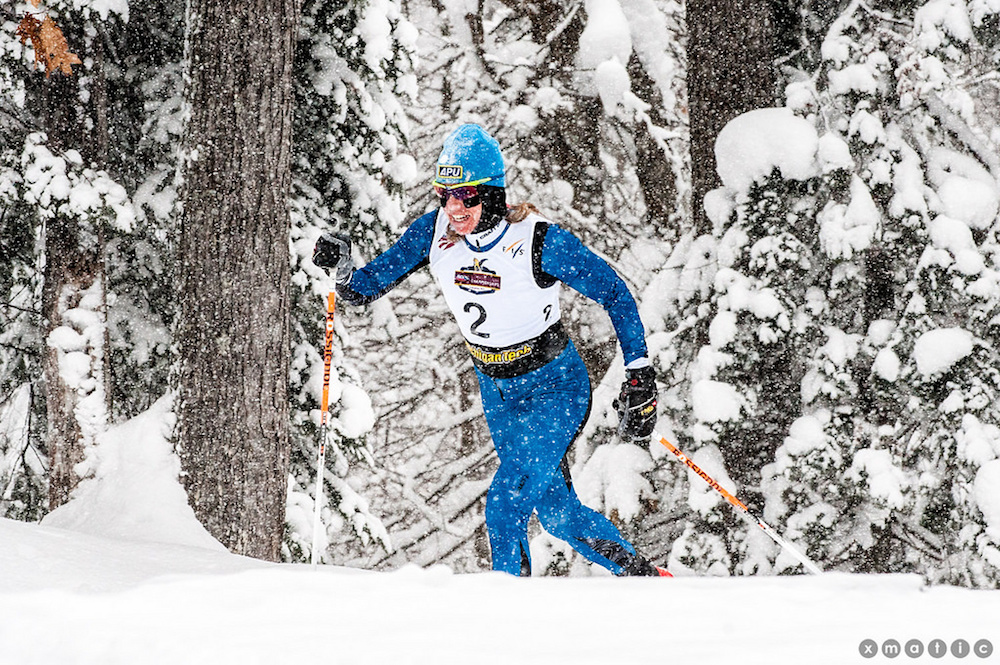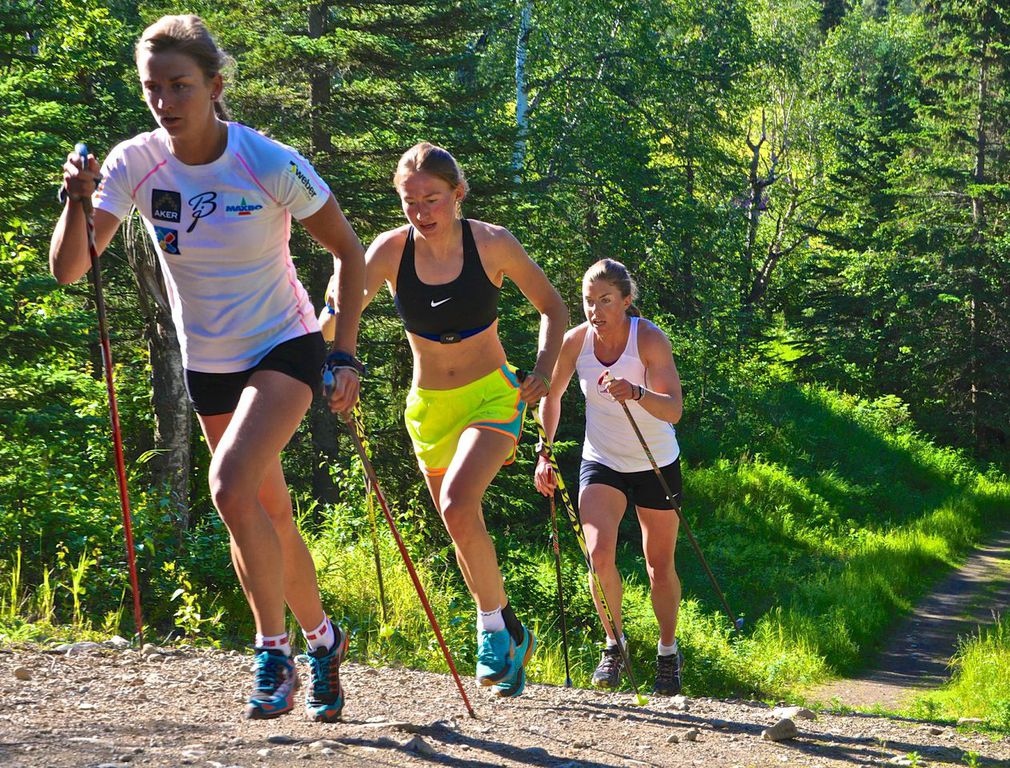
This week’s Wednesday Workout comes from Rosie Brennan, a 26-year-old Park City native who skis for Alaska Pacific University. Described by USST Head Coach Chris Grover as “the number one athlete in the U.S. to beat,” Brennan has dominated the domestic circuit, winning three of four races at the 2015 U.S. Cross Country Championships. She is also fresh off her best World Cup results in Rybinsk, Russia where she earned 13th in the 10 k skate and 20th in the 15 k skiathlon. Brennan provided FasterSkier one of her favorite and most beneficial workouts as she prepares to compete in the 2015 World Championships in Falun, Sweden.
***
Bounding intervals are nothing new to cross country skiers and certainly not all that innovative, but when it comes down to it, being a good cross country skier requires an immense amount of fitness and bounding is the method I believe builds fitness best.
There are a number of added bonuses of this workout as well. First, it does not require much time. Students, masters, and elite racers can all find an hour or so to make some real fitness gains. Second, it doesn’t not require snow, something that seems important to have in your back pocket these days. I did not have snow before Christmas and had to resort to dryland training. I think bounding is a great way to build race fitness with relatively low impact on the joints, making it a good workout to go back to if you loose snow. Third, and again, there is relatively low impact on your joints when bounding, especially if you can find an alpine resort and can take advantage of a gondola or chairlift. After having knee surgery, I did some form of bounding every other day with the help of a gondola ride down to ensure my knee was not further damaged. Fourth, bounding requires more mental focus and strength then other workouts so it is a great way to build mental toughness as well.
“Bounding is humbling. It never feels good and it never gets easier, but it is absolutely making you stronger in the head, heart, and muscles.” – Rosie Brennan
I think bounding workouts are good to do all summer, but I like to increase the frequency of them towards the fall, Level 4 bounding in particular, because I find bounding helps to sharpen and helps me get ready for race season.
Personally, I love going really hard, so I will highlight some Level 4 bounding workouts I enjoy.

The Altitude Version:
Altitude camps are often used to increase capacity periodically throughout the summer. Bounding at altitude, therefore, feels like the ultimate workout and one I have loved since the day I started training.
I like to run for 30 minutes to warm up on the single track trails at the base of Canyons resort in Park City. Typically, I do 5 x 4 minute L4 with 3 minute recovery, however, with altitude I like to start in L3 and work up. The work road at Canyons is long enough that I can walk up in between intervals to keep the body moving. If the road is not long enough, it’s important to jog or at least walk down in between, remember you can’t stop in a race. If I am feeling good, I increase my effort each interval, making the last one an all-out effort.
The reason I love doing this workout at the Canyons is because the road has an unbelievably consistent grade that allows bounding, not walking or running, the whole time. If you can find a road with a consistent grade, I think that is the most ideal way to do this workout so you can work on the motion of bounding, perfecting your bounding technique and really increasing the efficiency of those muscles. Once I get to the top, there is a 15 minute trail that I jog to get to the gondola for a scenic ride back to my car.
The Sea-Level Version:
At APU, we use a bounding loop on the Hillside trail system as a testing looping that we periodically return to in order to see where our fitness is at. This loop mimics racing terrain as it stair-steps up for somewhere between 4 to 5 minutes.
The format is very similar to the above workout, but because we are using it as more of a test, we do the same loop for every interval and record our time, heart rate, and sometimes lactate for each one. Typically, we do 4 to 5 intervals and they usually take 4 to 4.5 minutes. We jog down a more direct route for a 3 minute recovery. I like to start the first one in L3 and build into the workout a bit. The last one is an all out effort. This is the time we typically take particular note of when we are looking at our training.
A few things to keep in mind:
- Good bounding is not the fastest way to get from point A to point B. It is important to remember good bounding technique and not resort to running when the body gets tired. Good bounding looks a lot like classic skiing.
- Bounding is humbling. It never feels good and it never gets easier, but it is absolutely making you stronger in the head, heart, and muscles.
- Be sure to use bounding poles that come to about chest high, not classic poles. This will make it easier to use good technique.
- Misery loves company. Teammates make this workout much more enjoyable and can help push one another to reach that next level of fitness.
Lander Karath
Lander Karath is FasterSkier's Associate Editor from Bozeman, Montana and a Bridger Ski Foundation alumnus. Between his studies at Middlebury College in Vermont, he is an outdoor enthusiast and a political junkie.



